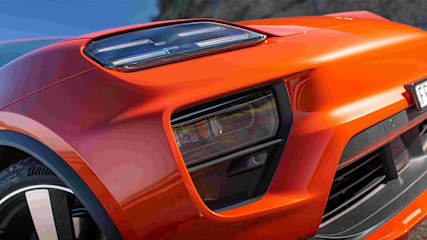It's the end of the passenger car as we know it - and we all feel fine about it: Why the likes of the 2025 Mazda6, Hyundai i30, Mitsubishi Mirage and more are leaving to never return as we buy up 2026 Ford Ranger, BYD Shark 6 and Toyota RAV4 instead
By Stephen Ottley · 06 Jul 2025
First they came for our Holden Commodores and Ford Falcons and we said nothing. Then they came for our Subaru Libertys and Honda Accord Euros and we stayed silent. And then the Ford Focus and Mitsubishi Lancer and we were still quiet.Because, it seems, Australians are done with the passenger car as we have known it. The traditional sedan or hatchback, the type of car that served us for decades, is facing extinction in the coming years as we continue to migrate towards SUVs and utes.In the last decade passenger car sales (city, small, medium and large cars) have declined 63.0 per cent, while we ditched the Falcon for Ranger and Commodore for a LandCruiser.And there appears to be no end in sight, not just in Australia but around the world. Ford recently confirmed it is done with the Focus, several years after it was dropped here. That will leave the Mustang as the only ‘passenger car’ (not a high-riding SUV, ute or van) that the Blue Oval builds. In America, Chevrolet has a single sedan left, the Malibu, a remarkable state of affairs for a brand that has built dozens of famous sedans over the years, from the Bel Air to the Impala.This trend is not reserved to sedans either, the once-beloved hatchback is facing an uncertain future in Australia. Hyundai Australia has lost approximately 10,000 sales annually because it has cut its i30 hatch line-up to just the sporty N and N-Line variants.But when asked if there was a possibility to bring back a larger, more affordable range of hatchbacks, new Hyundai Australia boss, Don Romano, didn’t mince words.“No,” was his response.Romano explained that Australia, despite its declining hatchback sales, remains one of the bigger markets for the cars — a situation that doesn’t create a viable long-term business case.“Well, what's interesting I've done a lot of work for New Zealand prior to this,” said Romano, who previously led Hyundai Canada. “I was on the board of directors for Hyundai New Zealand, which is an independent distributor. And reaching out to them, asked them how many i30 hatches could they take? And they said, zero. It's not a seller in New Zealand. There's no demand for it in North America. There's no demand for it in Canada.“Hatches are just more popular here because I think the conditions are very specific here with small parking places and tight roads where it really makes sense to open that back and put your supermarket groceries in or your luggage or whatever it is. You can easily put it in and out. In Canada we go through the side doors, here you need to go through the back, so SUV or if it's a car with a hatch, it serves the same purpose.”Despite Hyundai only now offering the i20 N, i30 N and i30 N-Line as hatchbacks, Romano said the brand famous for the Accent and Excel would continue to offer the high-trim hatches as long as they are available to this market.“I think we will continue to have a hatch, but at the higher trim levels because we're acquiring them from Europe and now we're dealing with foreign exchange and shipping that is expensive,” he explained. “So it has to be the right hatch to work.. Right now we're selling… a higher end i20 N, it's doing very well. So it shows that if you make a great vehicle and even if it's a higher price than the competition, if you deliver the value on it, it will succeed.”Looking at the sales figures across the decade there is a clear pattern across all four major passenger car categories. Large sedan sales (Commodore, Falcon, etc) have plummeted more than 95 per cent since 2015 as the formerly popular locally-built models disappeared.City cars, light vehicles like the Hyundai Accent and Mitsubishi Mirage, have dropped by more than 72 per cent over the past decade. Small car sales, once home to Australia’s best-selling vehicle, are down more than 60 per cent. Medium car sales have, somewhat surprisingly, had the smallest decline thanks to the emergence of electric vehicles like the Tesla Model 3 and BYD Seal, as well as the continued success of the stalwart Toyota Camry. All these huge sales drops have been connected to — either as a cause, effect or both — by a decline in offerings. In 2015 there were 22 non-luxury light cars to choose from, in 2025 that’s down to just four. In the small car market the 32 choices from a decade ago are down to just nine. While the medium car segment has seen more than 19 choices (including two offerings from both Citroen, Honda and Hyundai) in 2015 down to just five choices, now that the Mazda6 is gone too.There is likely no hope for a resurgence in the near-future, with even electric vehicles - once seen as the last great hope for sedans and small cars - appear to be headed down the SUV/crossover path with more regularity.










.jpg)
.jpg)
.jpg)
.jpg)
.jpg)
.jpg)
